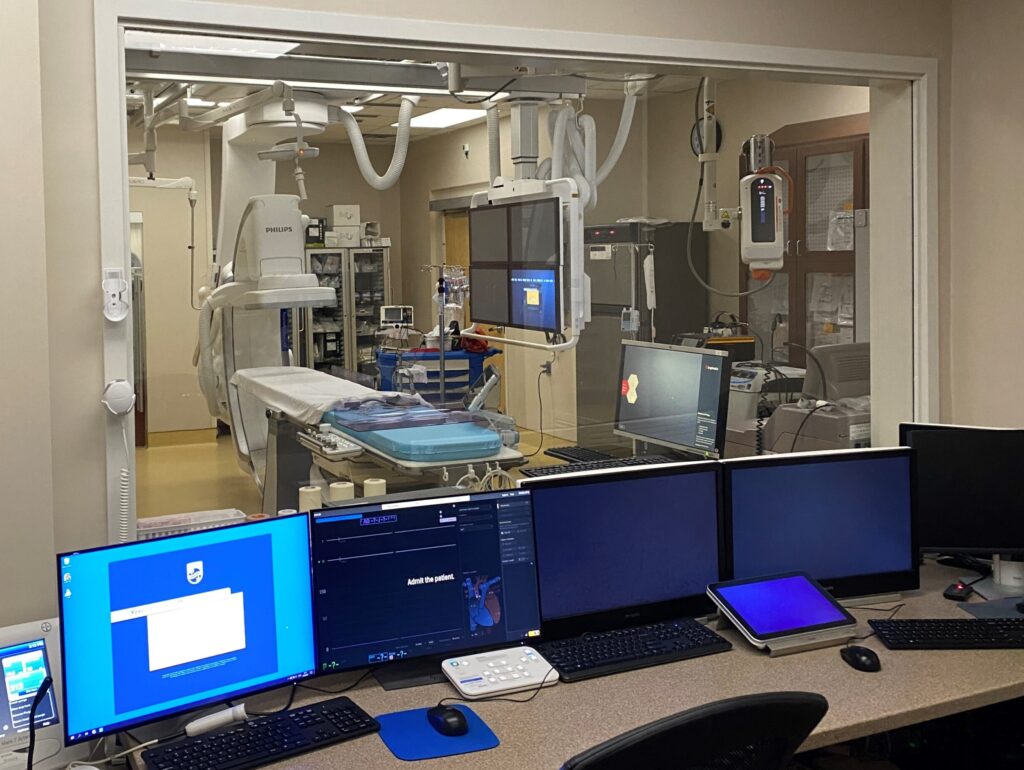
What is a Cath Lab?
Fear is a natural reaction when having tests done on your heart. The biggest of these is often open-heart surgery, but not all cardiac issues require such difficult and invasive procedures to diagnose or treat. We are thankful to have two cardiac catheterization (cath) labs that allow our staff to perform minimally invasive tests and advanced procedures.
What can be done in a Cath Lab?
A variety of test and procedures can be performed in a cath lab including, but not limited to:
• left/right/radial heart catheterization to detect blockages and check the pressure of heart valves
• vertebroplasty for injured vertebrae
• nephrostomy for blocked urethra
• inserting pacemakers or changing the batteries
What equipment is used in a Cath Lab?
You can count on our highly skilled team of RNs, certified registered nurse practitioners, registered radiologists, and cardiologists to use state of the art technology, like fluoroscopy equipment, video monitors and hemodynamic monitors to view and diagnose cardiovascular issues.
What happens during a procedure?
Prior to the procedure patients will be lightly sedated to ensure their comfort and safety. During the procedure the cardiologist will access an artery, usually in the leg or arm, and the physician inserts a catheter through the artery and positions it near the heart under x-ray guidance. A cardiac catheterization provides essential information about all aspects of the heart. It is most frequently used to identify blockages in the arteries that feed the heart. Specialists work together to monitor the patient throughout the procedure, which usually takes less than an hour. Patients may be admitted to the hospital for three to six hours for observation post-procedure with a follow up appointment with a cardiologist in two to four weeks.
